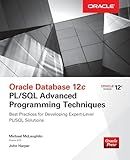Best Database Import Tools to Buy in October 2025

Statistics: A Tool for Social Research and Data Analysis (MindTap Course List)



The Kimball Group Reader: Relentlessly Practical Tools for Data Warehousing and Business Intelligence Remastered Collection



Qualitative Data Collection Tools: Design, Development, and Applications (Qualitative Research Methods)



Librarian's Guide to Online Searching: Cultivating Database Skills for Research and Instruction



Oracle Database 12c PL/SQL Advanced Programming Techniques



The Manga Guide to Databases (The Manga Guides)



Fundamentals of Database Systems (3rd Edition)


To import a database into MySQL using XAMPP, you can follow these steps:
- Open the XAMPP Control Panel and start the Apache and MySQL services.
- Launch your web browser and enter "localhost/phpmyadmin" in the address bar.
- This will open the phpMyAdmin interface. Click on the "Databases" tab.
- Create a new database where you want to import the database into by entering the desired name in the "Create database" field and clicking on the "Create" button.
- Once the database is created, select it from the list on the left-hand side of the screen.
- Click on the "Import" tab in the top navigation menu.
- The import screen will appear. Click on the "Choose File" button to select the database file you want to import. Ensure the file type is compatible with MySQL (e.g., .sql or .zip).
- After selecting the file, click on the "Go" button to start the import process.
- The progress will be displayed on the screen, and once it's completed, you will see a success message.
- You can now verify that the database has been imported by checking the tables and data within it.
Remember to adjust the file size limit and execution time settings in your PHP configuration file (php.ini) if needed, in case you encounter any issues while importing a large database.
What are the required credentials to access MySQL in XAMPP?
The default credentials to access MySQL in XAMPP are:
- Hostname: localhost (or 127.0.0.1)
- Username: root
- Password: (blank or empty)
- Port: 3306
Please note that these credentials can be changed during the installation process or within the XAMPP control panel.
What is phpMyAdmin and how does it connect to MySQL in XAMPP?
phpMyAdmin is a free and open-source web-based tool for administering MySQL databases. It allows users to manage databases, execute SQL queries, import/export data, and perform various administrative tasks through a user-friendly interface.
In XAMPP, phpMyAdmin is included as part of the package to facilitate the management of MySQL databases. To connect phpMyAdmin to MySQL in XAMPP, you need to follow these steps:
- Start the Apache and MySQL services in XAMPP control panel.
- Open a web browser and go to http://localhost/phpmyadmin or http://127.0.0.1/phpmyadmin. This will open the phpMyAdmin login page.
- Enter the username and password for your MySQL server. By default, the username is "root" and there is no password.
- Click on the "Go" button to log in, and you will be redirected to the main phpMyAdmin interface.
- From there, you can start managing your MySQL databases, create new databases, tables, run queries, import/export data, etc.
In XAMPP, phpMyAdmin is pre-configured to connect to the MySQL server bundled with XAMPP. It automatically fetches the MySQL credentials and connects to the server when you log in using the provided interface.
What are the common reasons for a failed database import in XAMPP?
There can be several reasons for a failed database import in XAMPP. Some common reasons include:
- Incorrect file format: The database import may fail if the file being imported is not in the correct format. Make sure you are using a compatible file format such as SQL or CSV.
- Large file size: If the database file being imported is too large, it may exceed the server's limits and cause the import to fail. Check if there is a maximum file size limit set in the server configuration and try to split the file into smaller parts if necessary.
- Incompatible database version: If the file being imported was exported from a different version of the database system than the one installed in XAMPP, it may cause compatibility issues and result in a failed import. Ensure that the database versions are compatible.
- Insufficient privileges: If the user account used for the import does not have sufficient privileges to access and modify the database, the import may fail. Make sure the user has appropriate permissions for importing the database.
- Syntax errors in the database file: If there are syntax errors or inconsistencies in the SQL statements within the database file, it can cause the import to fail. Check the file for any errors and correct them if necessary.
- Server timeout: If the import process takes too long and exceeds the server's timeout limit, the import may fail. Adjust the server's timeout settings to allow for a longer import duration.
- Insufficient server resources: If the server does not have enough memory or processing power to handle the import, it may fail. Check the server's resource usage during the import process and consider optimizing or upgrading the server if needed.
How to revert a failed database import in XAMPP?
To revert a failed database import in XAMPP, you can follow these steps:
- Identify the failed database import: Check the error message or log file to determine which specific database import failed.
- Remove or drop the imported database: If the failed import created a new database, you can remove it by following these steps: Open the XAMPP control panel and start Apache and MySQL. Open a web browser and visit http://localhost/phpmyadmin. In phpMyAdmin, select the database you want to remove from the left-hand sidebar. Click on the "Operations" tab at the top. In the "Danger zone" section, click on the "Drop the database (DROP)" link. Confirm the database removal when prompted.
- Restore the database backup: If you have a backup of the database before the failed import, you can restore it by following these steps: Open phpMyAdmin from the XAMPP control panel. Select the database where you want to restore the backup. Click on the "Import" tab at the top. Choose the backup file by clicking on the "Browse" button or dragging the file into the designated area. Configure any necessary import settings (e.g., character set) if needed. Click "Go" to start the database import.
- Verify the database restoration: After the import process is completed, you should verify that the database is restored successfully by checking the relevant tables and data.
By following these steps, you can effectively revert a failed database import in XAMPP.
How to open the MySQL command-line interface in XAMPP?
To open the MySQL command-line interface in XAMPP, follow these steps:
- Start the XAMPP control panel by going to the XAMPP installation directory and running the xampp-control.exe file.
- Start the Apache and MySQL modules by clicking the "Start" button next to them in the control panel.
- Open your web browser and enter the following URL: http://localhost/phpmyadmin/.
- This will open the phpMyAdmin interface. In the navigation menu on the left side, click on the "SQL" tab.
- In the "Run SQL query/queries on database" section, you will see a textbox. This is the MySQL command-line interface.
- Type your desired MySQL command or query in the textbox.
- Click the "Go" button to execute the command.
You can also open the MySQL command-line interface directly from the command prompt or terminal by following these steps:
- Open the command prompt (Windows) or terminal (Mac/Linux).
- Navigate to the XAMPP installation directory. By default, it is located at C:\xampp on Windows.
- In the command prompt or terminal, execute the following command:
mysql -u root -p
- You will be prompted to enter the MySQL root password. If you haven't set a password, just press Enter.
- Once you are successfully logged in, you will be in the MySQL command-line interface and can start executing commands or queries.
What is the maximum file size limit for database import in XAMPP?
The maximum file size limit for database import in XAMPP depends on various factors such as the maximum file upload size specified in the php.ini file and the maximum execution time. By default, the maximum file upload size in XAMPP is set to 2MB. However, you can increase this limit by modifying the following parameters in the php.ini file:
- Upload max file size: You can increase the value of the "upload_max_filesize" directive to specify the maximum file upload size. For example, setting it to "10M" would allow a maximum file size of 10MB.
- Post max size: You should also update the "post_max_size" directive to ensure it is greater than or equal to the "upload_max_filesize" value. For example, if you set "upload_max_filesize" to "10M", then "post_max_size" could be set to "12M".
- Maximum execution time: Depending on your database file size, you may also need to increase the maximum execution time to prevent timeout errors during the import process. The parameter to update is "max_execution_time" and you can set it to a higher value, such as "300" (which represents 5 minutes).
After updating these settings, you will need to restart the Apache server for the changes to take effect.
